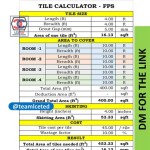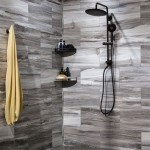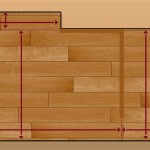Distressed White Wood Flooring: A Guide to Rustic Elegance
Distressed white wood flooring has emerged as a popular design choice, blending the timeless appeal of wood with a bright, airy aesthetic. This flooring option adds character and visual interest to spaces, providing a foundation for a variety of interior design styles. The intentional imperfections of distressed wood, combined with the light-reflecting qualities of white, create a unique balance of rustic charm and contemporary elegance.
Understanding the characteristics, installation, and maintenance requirements of distressed white wood flooring is crucial for homeowners and designers considering this option. This article explores the nuances of distressed white wood flooring, providing a comprehensive overview of its various aspects.
Understanding the Appeal of Distressed White Wood Flooring
The appeal of distressed white wood flooring lies in its ability to evoke a sense of history and authenticity. Unlike perfectly smooth, uniform floors, distressed wood showcases imperfections such as knots, cracks, and variations in texture. These imperfections are not flaws but rather integral components of the design, contributing to the overall character and visual depth of the floor.
The white finish further enhances the appeal of distressed wood by reflecting light and creating a brighter, more spacious feel. This is particularly beneficial in smaller rooms or spaces with limited natural light. The combination of distressed texture and a white finish provides a versatile backdrop that complements a wide range of furniture styles and color palettes. From farmhouse chic to coastal retreats, distressed white wood flooring can seamlessly integrate into various design schemes.
Furthermore, distressed flooring is often perceived as more forgiving than pristine floors. Minor scratches and everyday wear and tear tend to blend in with the existing distressed elements, reducing the need for constant maintenance and upkeep. This makes it a practical choice for busy households or spaces that experience high foot traffic.
Types of Wood and Distressing Techniques
Various types of wood can be used to create distressed white wood flooring, each offering unique characteristics and aesthetic qualities. Pine, oak, and maple are among the most common choices, each having different grain patterns, hardness levels, and staining capabilities. Pine, for instance, is a softer wood that readily accepts distressing techniques, while oak provides a more durable and resilient surface.
The distressing process involves a range of techniques designed to create the desired level of wear and tear. Some of the common distressing techniques include:
*Hand-scraping:
This involves using hand tools to create uneven surfaces and edges, mimicking the look of aged wood that has been subjected to years of use. *Wire-brushing:
Wire brushes are used to remove the softer wood fibers, leaving behind a textured surface with pronounced grain patterns. *Chipping and denting:
Tools are used to create intentional chips, dents, and imperfections in the wood, adding to the rustic character. *Burnishing:
This technique involves lightly burning the wood surface to create subtle variations in color and texture. *Adding knots and filler:
Knots and filler are added to create the look of natural imperfections in the wood.The specific techniques used and the extent of the distressing will vary depending on the desired look and feel. Some floors may feature subtle distressing, while others will have a more pronounced and weathered appearance. The white finish can also be applied in different ways, ranging from a solid, opaque coating to a semi-transparent stain that allows the natural wood grain to show through.
In addition to the type of wood and distressing techniques, the width and length of the planks can also impact the overall aesthetic. Wider planks tend to create a more spacious and modern feel, while narrower planks can evoke a more traditional or rustic look. Varying the lengths of the planks can also add visual interest and authenticity.
Installation and Maintenance Considerations
Proper installation is crucial for ensuring the longevity and performance of distressed white wood flooring. The installation process will vary depending on the type of flooring chosen, such as solid hardwood, engineered hardwood, or laminate. Solid hardwood is typically installed by nailing or gluing it directly to the subfloor, while engineered hardwood can be installed using a variety of methods, including floating, gluing, or nailing.
Before installation, it is essential to ensure that the subfloor is level, clean, and dry. Any imperfections in the subfloor can affect the stability and appearance of the finished floor. Acclimatizing the flooring to the room's temperature and humidity levels for several days before installation is also crucial to prevent warping or expansion after installation. This process allows the wood to adjust to its new environment and minimize movement after it is installed.
Maintaining distressed white wood flooring requires regular cleaning and care to preserve its beauty and durability. Regular sweeping or vacuuming is essential to remove dirt and debris that can scratch or damage the surface. When cleaning the floor with water, it is important to use a damp mop and avoid excessive moisture, as this can penetrate the wood and cause warping or staining.
Avoid using harsh chemicals or abrasive cleaners, as these can damage the finish and dull the appearance of the floor. Specialized wood floor cleaners designed for distressed finishes are available and can help maintain the floor's beauty without causing damage. Applying a protective coating, such as a polyurethane finish, can also help protect the floor from scratches, stains, and water damage.
Depending on the level of foot traffic and wear and tear, the floor may require occasional refinishing to restore its original luster. Refinishing typically involves sanding down the existing finish and applying a new coat of stain or sealant. This is a more involved process that should be handled by a professional flooring contractor. However, proper maintenance and care can significantly extend the lifespan of distressed white wood flooring and minimize the need for refinishing.
Design Ideas and Applications
Distressed white wood flooring is a versatile design element that can be incorporated into a variety of interior spaces and styles. In living rooms, it provides a warm and inviting backdrop for comfortable seating and eclectic decor. The white finish brightens the space and creates a sense of openness, while the distressed texture adds visual interest and character.
In kitchens, distressed white wood flooring can create a charming and rustic feel, complementing farmhouse-style cabinetry and hardware. The light color of the flooring helps to reflect light and make the kitchen feel brighter and more spacious. Pairing it with natural wood countertops and exposed brick accents can further enhance the rustic aesthetic.
In bedrooms, distressed white wood flooring can create a serene and relaxing atmosphere. The soft, muted tones and textured surface provide a calming backdrop for comfortable bedding and minimalist decor. Adding cozy rugs and soft lighting can further enhance the sense of comfort and relaxation.
In hallways and entryways, distressed white wood flooring can create a welcoming and stylish first impression. The durable surface can withstand high foot traffic, while the distressed texture helps to hide scratches and imperfections. Adding a statement rug and decorative accents can further enhance the visual appeal of the space.
Beyond residential applications, distressed white wood flooring can also be used in commercial spaces, such as retail stores, restaurants, and offices. Its durability and low-maintenance requirements make it a practical choice for high-traffic areas, while its unique aesthetic can add character and charm to any space.
Cost Considerations
The cost of distressed white wood flooring can vary depending on several factors, including the type of wood, the distressing techniques used, the width and length of the planks, and the installation labor. Solid hardwood flooring is typically more expensive than engineered hardwood or laminate, while more elaborate distressing techniques can also add to the cost.
When budgeting for distressed white wood flooring, it is important to consider the cost of materials, installation, and any necessary subfloor preparation. Obtaining quotes from multiple flooring contractors can help ensure that you are getting the best possible price. It is also important to factor in the cost of maintenance and cleaning supplies, as well as any potential refinishing costs in the future. While distressed white wood flooring may require a higher initial investment than other flooring options, its durability, longevity, and aesthetic appeal can make it a worthwhile investment in the long run.
Exploring different wood species, distressing levels, and plank sizes can help you find options that fit your budget. Consider engineered hardwood options, which often provide a similar look and feel to solid hardwood at a lower cost. Shopping around and comparing prices from different suppliers can also help you find the best deals. Keep in mind that quality and durability should be prioritized over price when choosing flooring, as a cheaper option may not last as long or withstand wear and tear as well.
Sustainability and Environmental Impact
When considering distressed white wood flooring, it is important to consider the sustainability and environmental impact of the product. Look for flooring options that are certified by organizations such as the Forest Stewardship Council (FSC), which ensures that the wood comes from responsibly managed forests. Choosing flooring made from reclaimed or recycled wood can also help reduce the environmental impact.
The manufacturing process can also have an impact on the environment. Look for flooring options that are manufactured using environmentally friendly processes and materials, such as low-VOC finishes and adhesives. VOCs (volatile organic compounds) are chemicals that can be released into the air and contribute to indoor air pollution.
Consider the lifespan of the flooring and its potential for reuse or recycling at the end of its life. Choosing a durable and long-lasting flooring option can help reduce the need for frequent replacement, which can save resources and reduce waste. When it is time to replace the flooring, consider donating it to a local charity or reusing it in another project.
By making informed choices about the materials, manufacturing processes, and lifespan of distressed white wood flooring, you can minimize its environmental impact and contribute to a more sustainable future.

7 Fantastic Distressed White Wood Flooring Gallery Laminate Floors

Bellawood Artisan 5 8 In Sanibel Island White Oak Distressed Engineered Hardwood Flooring 9 45 Wide Ll

Love The Look Of Distressed White Washed Wood Floors Easy To Do Yourself Too Floor Mat Flooring Wash

Whitewashed Distressed Oak Wooden Flooring Hicraft

White Distressed Wood Flooring Floors

15 Wood Look Tile Styles Distressed Rustic Modern How To Distress Flooring

Distressed Wood Flooring Painted Worn Floorboards

Driftwood Effect Rustic White Floor Tile

Bibury Chalk White Distressed Engineered Oak

Bellawood Artisan 5 8 In Champagne Beach White Oak Distressed Engineered Hardwood Flooring 9 Wide Ll
Related Posts








